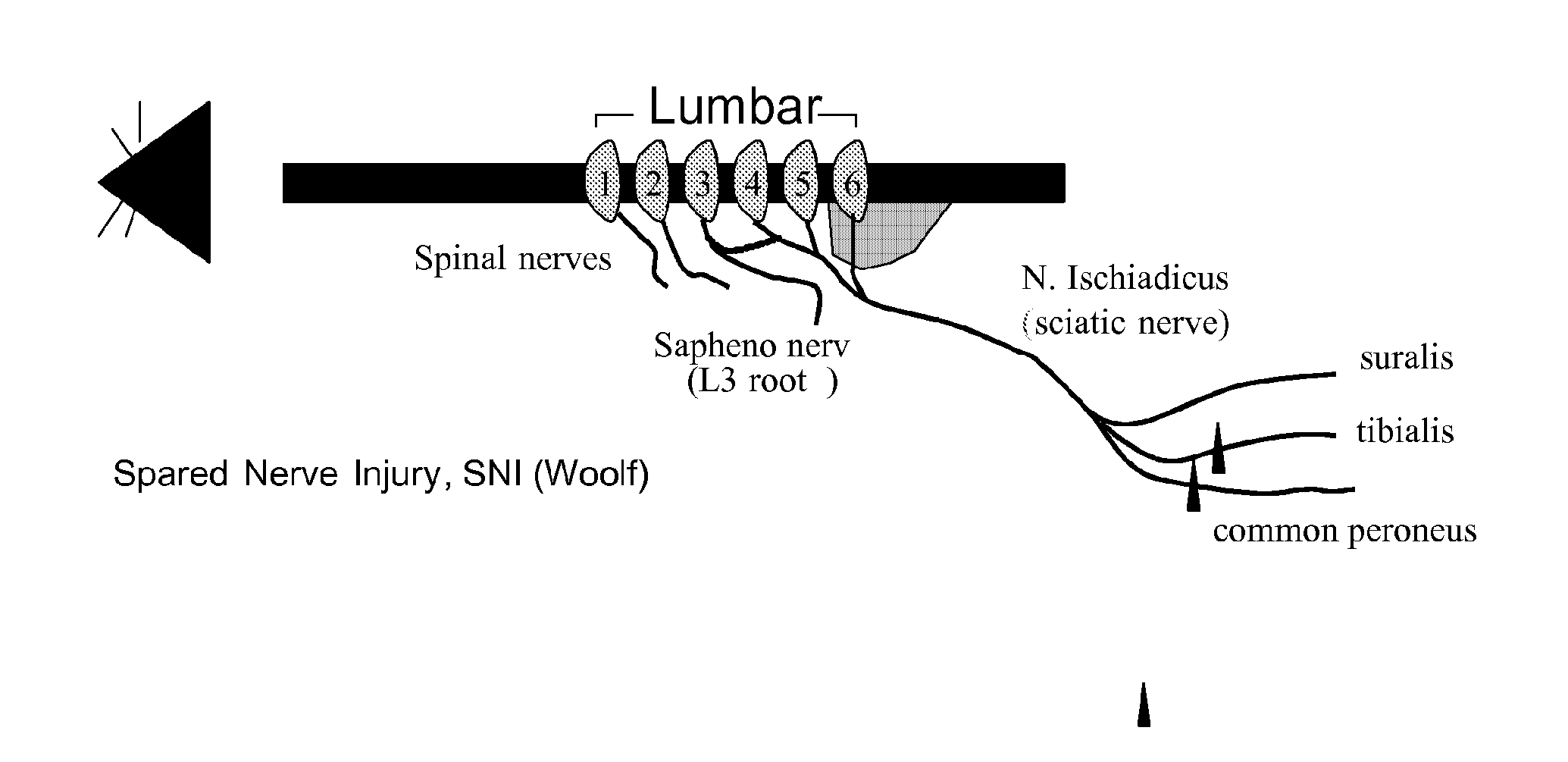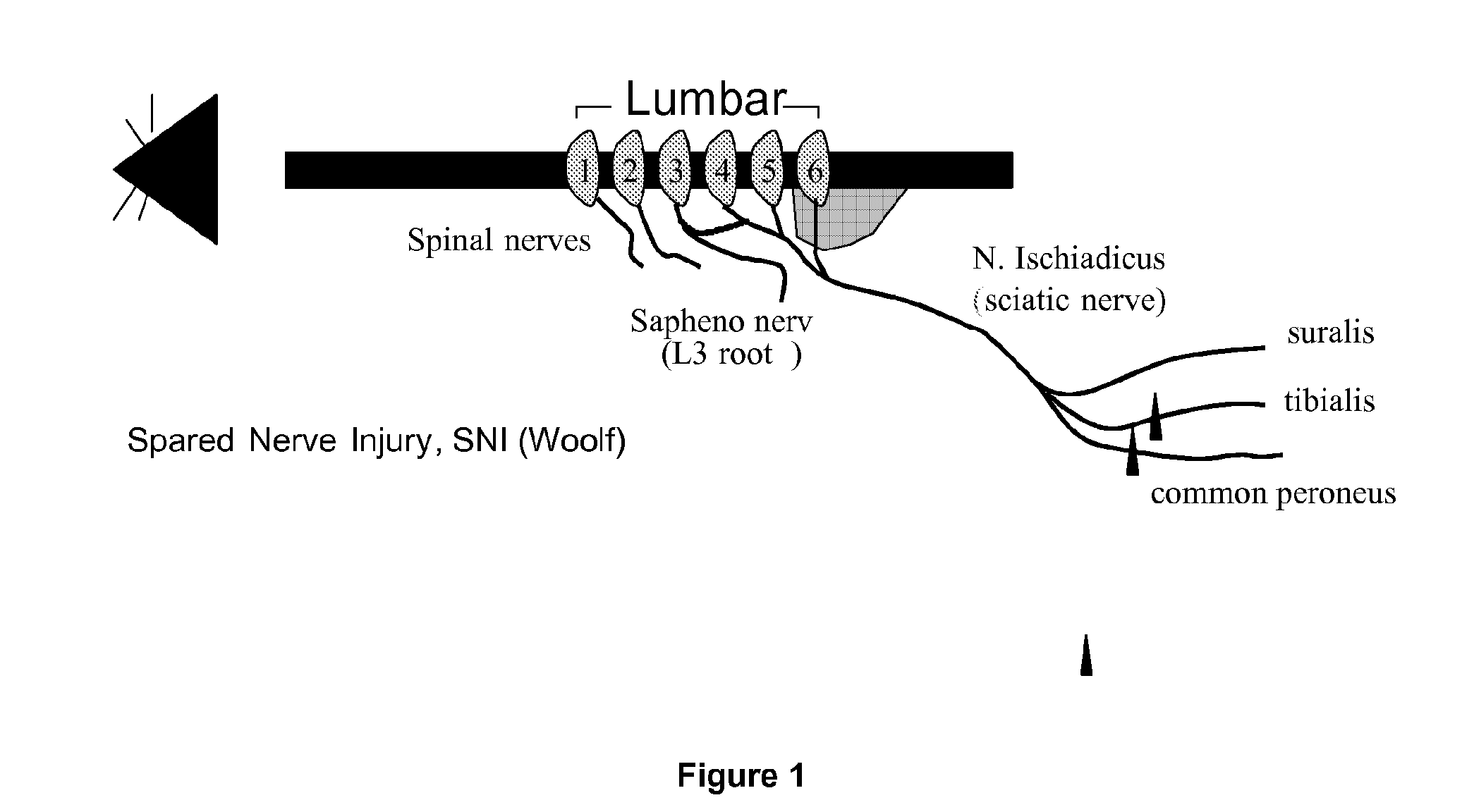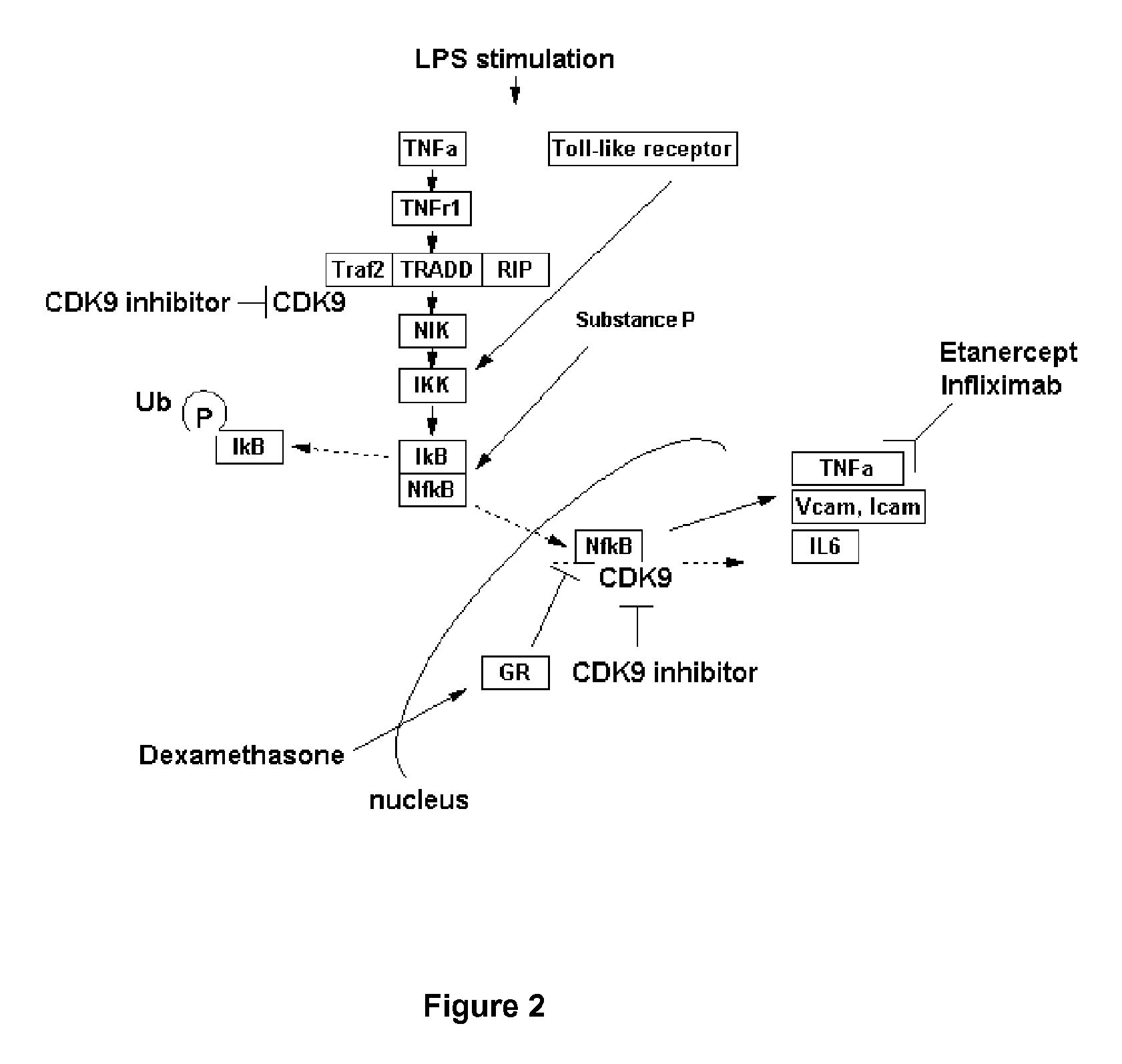Inhibitors of protein kinases
- Summary
- Abstract
- Description
- Claims
- Application Information
AI Technical Summary
Benefits of technology
Problems solved by technology
Method used
Image
Examples
example 1
Synthesis of {3-[4-(2-Methoxy-phenyl)-pyrimidin-2-ylamino]-phenyl}-methanesulfonamide (Compound 1)
[0217]
[0218]a. (Nitrophenyl)methanesulfonyl chloride (4.17 g, 20 mM) (Ziegler, Carl and Sprague, James M., J. of Org. Chem. (1951), 16, 621-5) was dissolved in acetonitrile (20 mL), concentrated aqueous ammonia (20 mL), saturated with ammonium carbonate, was added and the mixture was vigorously stirred for 1 h at room temperature. Then acetonitrile was evaporated, the residue was diluted with cold water (20 mL) leading to the formation of a precipitate which was filtered off and washed with water (2×5 mL) and ether and dried under reduced pressure. Yield of (3-nitro-phenyl)methanesulfonamide: 3.5 g (80%).
[0219]b. (3-Nitrophenyl)methanesulfonyl amide (3.5 g, 16 mM) was hydrogenated over Raney-Ni (0.5 g) in methanol at 50° C. and 70 psi for 4 hours. Then the catalyst was filtered off and washed with warm methanol. The combined filtrates were evaporated to give 2.83 g (95%) of (3-amino-phe...
example 2
Synthesis of 2-{3-[4-(2-Methoxy-phenyl)-pyrimidin-2-ylamino]-phenylmethanesulfonyl}-ethanol (Compound 9)
[0222]
[0223]a. 2-(3-Nitro-phenylmethanesulfonyl)-ethanol (0.8 g, 3.3 mmol) (Harms, Wolfgang et al., Ger. Offen. (1995), DE 4402189 A1, 19950727) was placed in a hydrogenation flask and dissolved in methanol (100 mL). After the addition of Raney-Ni (200 mg) the mixture was allowed to shake at a hydrogen pressure of 70 psi at 50° C. for 4 hours. Then the catalyst was removed by filtration and washed with methanol. The methanol solutions were combined and the solvent evaporated under reduced pressure. The crude product was purified by flash-chromatography (eluent system: dichloromethane / methanol—10 / 1), the desired fractions were combined, dried and evaporated. The residue was washed with diethylether to afford 2-(3-amino-phenylmethanesulfonyl)-ethanol (0.51 g, yield 73%).
[0224]b. A solution of 2-(3-amino-phenylmethanesulfonyl)-ethanol (0.215 g, 1 mmol) and 2-chloro-4-(2-methoxy-pheny...
example 3
I. Behavioral Animal Models for the Analysis of Inflammatory and Neuropathic Pain
[0226]Several animal models for the analysis of inflammatory and neuropathic pain are known. Said models share the common feature that after e.g., induction of a nerve lesion (e.g., spared nerve injury, SNI) or after exposing experimental animals to a noxious stimulus (e.g., injection of formalin or carrageenan), the signs of pain as induced by said interventions are measured by quantifiable behavioral components such as, e.g., paw withdrawal threshold to mechanical stimulation with von Frey hairs (or to thermal stimulation using a laser source or licking behaviour). These reactions are interpreted as being equivalent to mechanical and thermal allodynia (hypersensitivity to mechanical stimuli) or hyperalgesia in humans.
[0227]The spared nerve injury model (SNI model, as developed by Decosterd and Woolf (2000), see FIG. 1) is characterized by the induction of clinically relevant nerve lesions and after su...
PUM
 Login to View More
Login to View More Abstract
Description
Claims
Application Information
 Login to View More
Login to View More - R&D
- Intellectual Property
- Life Sciences
- Materials
- Tech Scout
- Unparalleled Data Quality
- Higher Quality Content
- 60% Fewer Hallucinations
Browse by: Latest US Patents, China's latest patents, Technical Efficacy Thesaurus, Application Domain, Technology Topic, Popular Technical Reports.
© 2025 PatSnap. All rights reserved.Legal|Privacy policy|Modern Slavery Act Transparency Statement|Sitemap|About US| Contact US: help@patsnap.com



